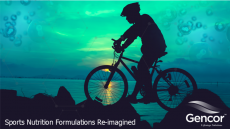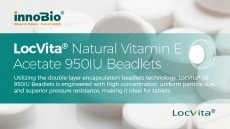Vitamin D associated with 'a range of important health outcomes', says new study

Data from 14,641 men and women aged between 42 and 82 indicated that for every 20-nmol/L increase in 25(OH)D, the storage form of vitamin D in the body, the risk of cardiovascular disease decreased by 4%, respiratory disease by 11%, and fractures by 11%.
The study, which only shows correlation and not causation, supports the safety of higher vitamin D intakes, with no evidence found for increased risk of mortality with 25(OH)D levels above 90 nmol/L.
“[T]his 13-year prospective study in a free-living, middle-aged and older British population provides additional support for the hypothesis that vitamin D status is associated with a range of important health outcomes including respiratory disease, cardiovascular disease, fractures, and total mortality,” wrote the researchers in the American Journal of Clinical Nutrition.
“Highest mortality rates were observed in individuals with 25(OH)D concentrations below 30 nmol/L. Negligible numbers of subjects had concentrations above 150 nmol/L, and only 1% of the population had concentrations above 120 nmol/L.”
“Within this observed population range, there was no evidence for increased mortality for 25(OH)D above 90 or 120 nmol/L, suggesting that a moderate increase in population mean concentrations may have a potential health benefit for preventing deficiency without increasing risk.”
Data on D
Vitamin D refers to two biologically inactive precursors - D3, also known as cholecalciferol, and D2, also known as ergocalciferol. Both D3 and D2 precursors are transformed in the liver and kidneys into 25- hydroxyvitamin D (25(OH)D), the non-active 'storage' form, and 1,25-dihydroxyvitamin D (1,25(OH)2D).
While our bodies do manufacture vitamin D on exposure to sunshine, the levels in some northern countries are so weak during the winter months that our body makes no vitamin D at all, meaning that dietary supplements and fortified foods are seen by many as the best way to boost intakes of vitamin D.
Study details
The researchers, led by Kay-Tee Khaw from the University of Cambridge’s School of Clinical Medicine, examined data from over 14,500 men and women living in Norfolk in the east of England. Results showed that the mean 25(OH)D level was 56.6 nmol/L for the study cohort. Crunching the numbers to remove potential confounders, such as age, gender, smoking, physical activity, and other variables, showed that for every 20-nmol/L increase in 25(OH)D the risk of total mortality was decreased by 8%. Significant risk reductions were also observed for respiratory disease, fractures, and cardiovascular disease.
However, in contrast to other studies, no association was found between vitamin D status and the risk of cancer, said the researchers.
Critics
While much growth in vitamin sales is driven by the sunshine vitamin (according to the Nutrition Business Journal), there is resistance to the use of vitamin D to fortify foods.
In her Food Politics blog, Marion Nestle from the Department of Nutrition, Food Studies, and Public Health at New York University, writes, “’Vitamin’ D is not a vitamin; it is a hormone synthesized by the action of sunlight on skin. For this reason alone, it does not belong on the food label.
“Vitamin D fortification must be understood as a form of hormone replacement therapy,” she continues. “As such, it raises questions about efficacy, dose, and side effects that should be asked about all such therapies.
“Fortification and supplementation provide hormone Vitamin D by the oral route. This is not physiological. Active vitamin D is synthesized in the body through a series of reactions that begin with the action of sunlight on skin. Sunlight on skin produces ample Vitamin D, is regulated to promote synthesis as needed and avoid toxicity, and may lead to synthesis of other useful biological components; the unphysiologic oral route does not produce the same benefits.”
Source: American Journal of Clinical Nutrition
Published online ahead of print, doi: 10.3945/ajcn.114.086413
“Serum 25-hydroxyvitamin D, mortality, and incident cardiovascular disease, respiratory disease, cancers, and fractures: a 13-y prospective population study”
Authors: K-T. Khaw, R. Luben, N. Wareham
















